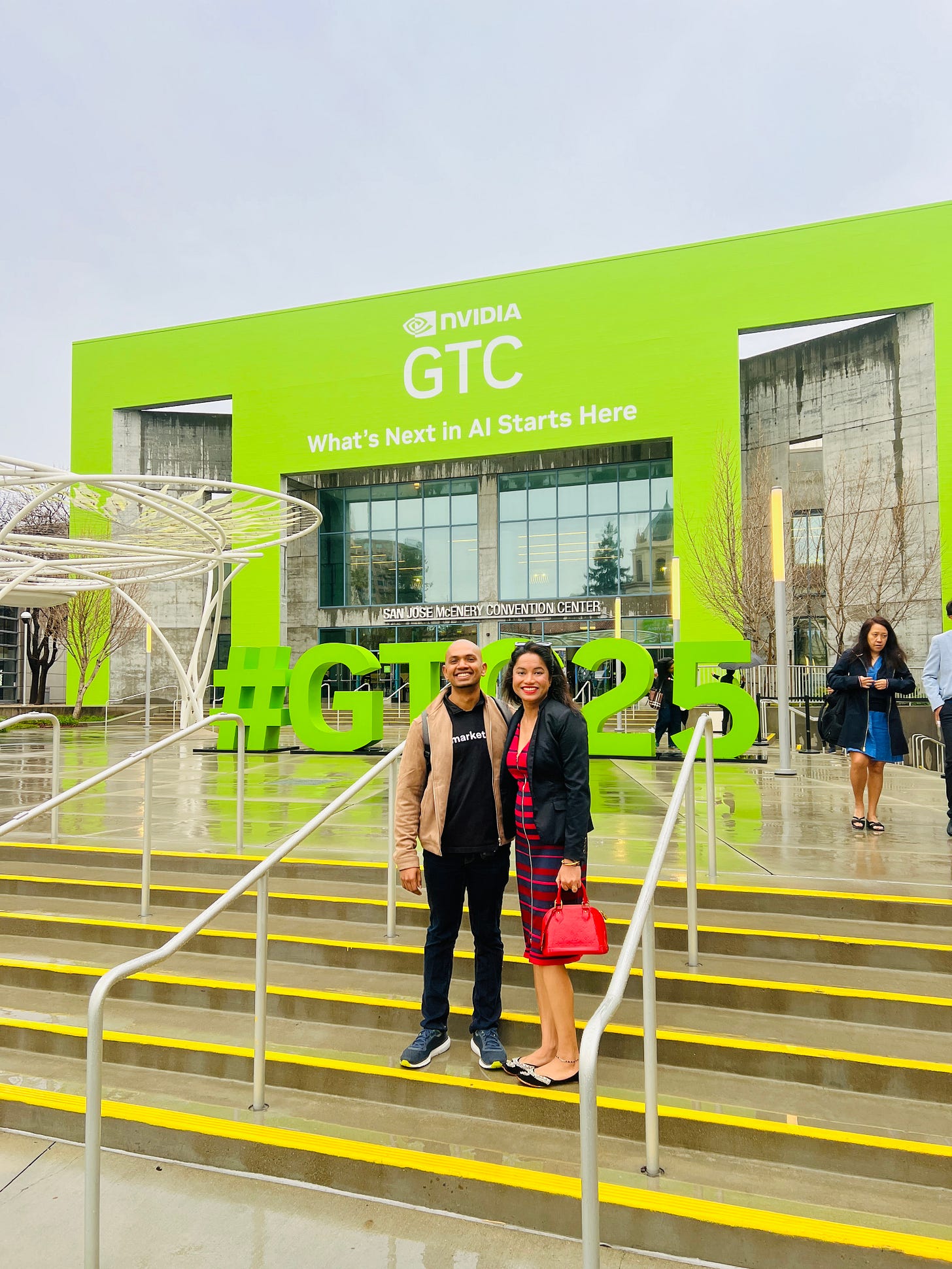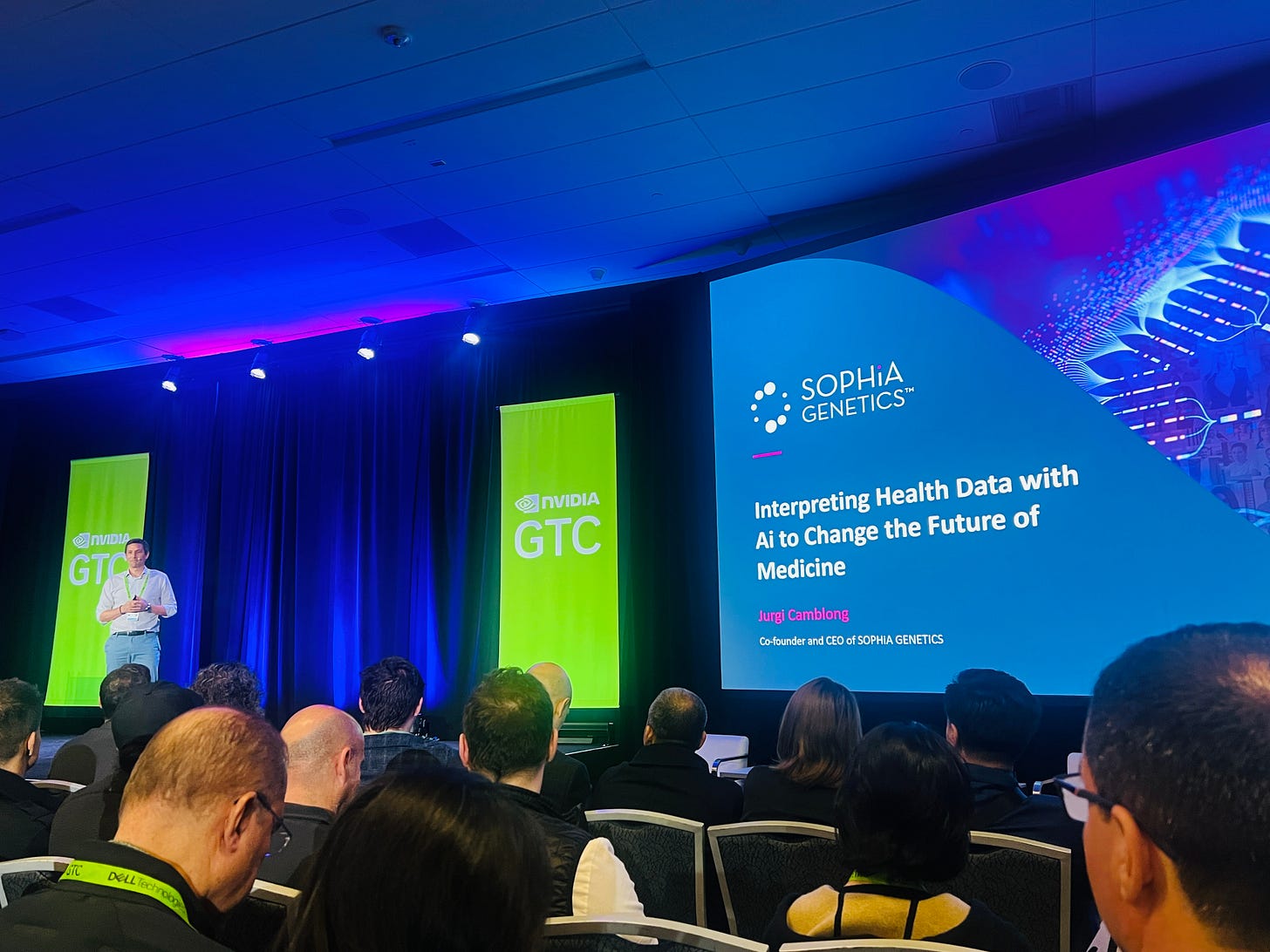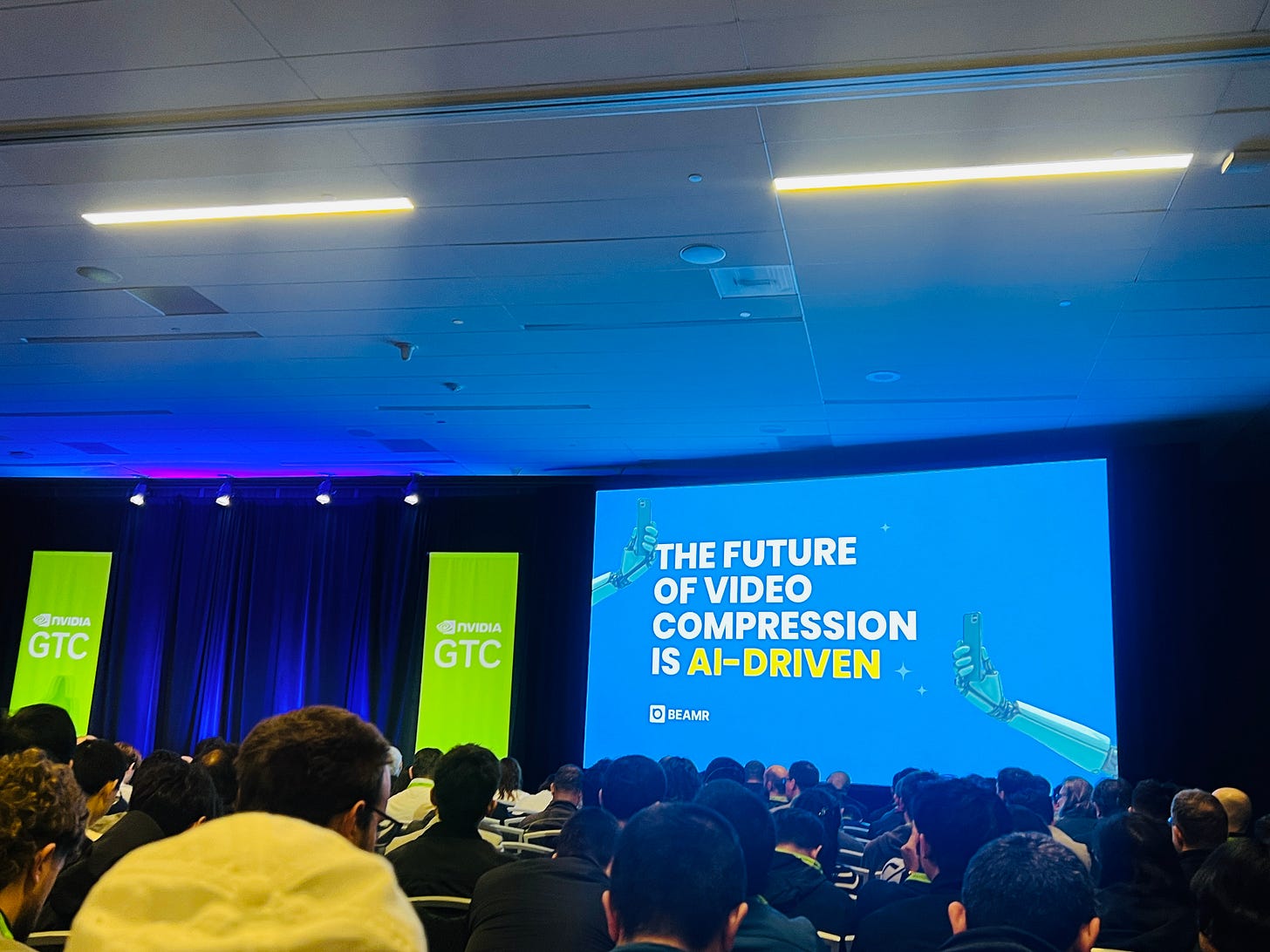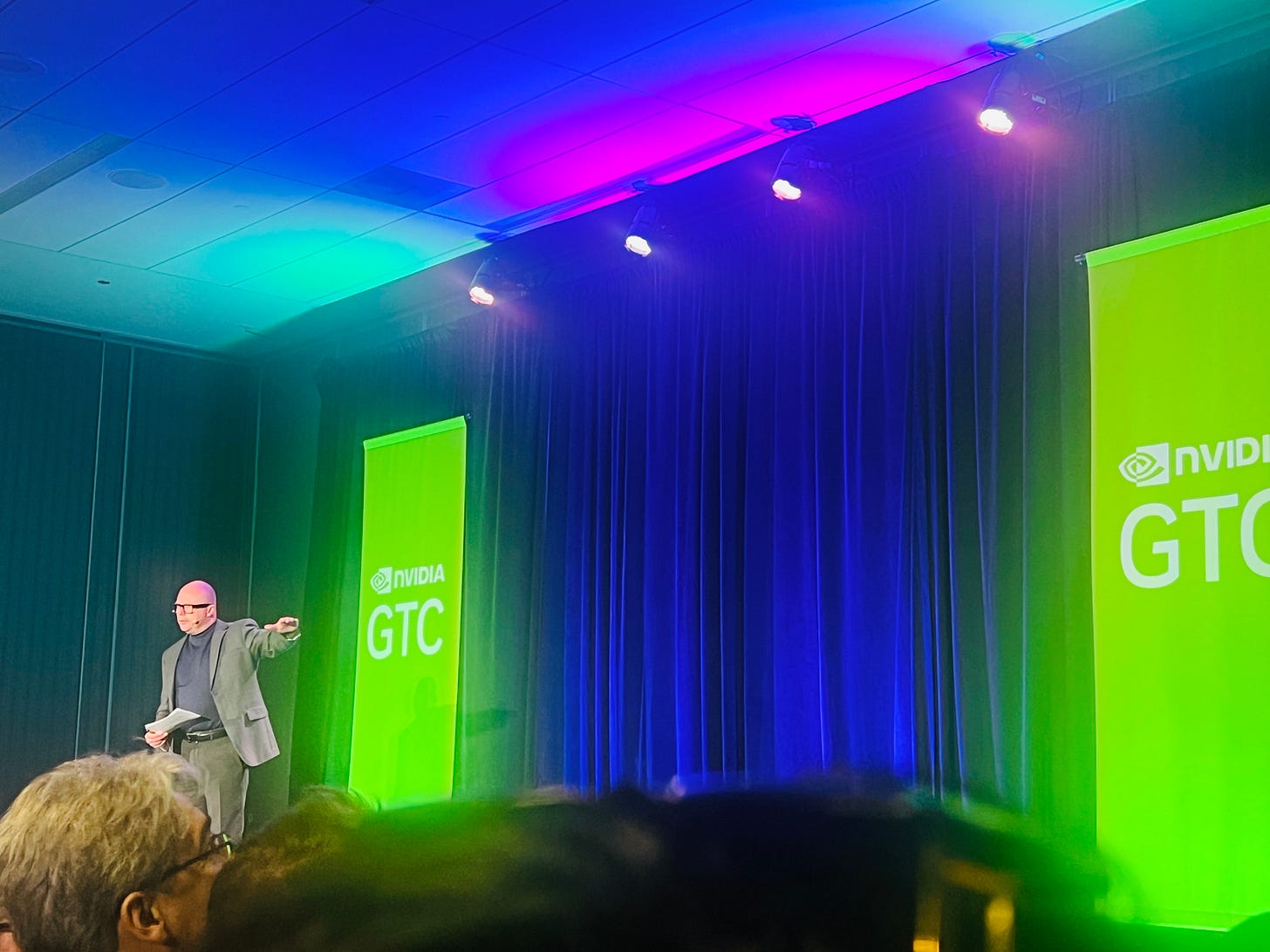My Key Learnings from Nvidia GTC 2025 - Day 1
Nvidia's GTC conference has long been a premier event for exploring the frontiers of AI and accelerated computing. Day One of GTC 2025 delivered eye-opening insights into AI’s potential, from revolutionizing healthcare and video technology to reshaping energy storage and data center strategies. Here's a breakdown of my top takeaways, highlighting the speakers, sessions, and their profound implications.
1. Interpreting Health Data with AI to Change the Future of Medicine
Speaker: Jurgi Camblong, Co-founder and CEO, SOPHiA GENETICS
Jurgi Camblong provided a powerful vision for AI's transformative impact on healthcare. SOPHiA GENETICS is at the forefront of using AI-driven multimodal data analytics to improve patient outcomes.
Key Insights:
Genomic Data Analysis: AI accurately identifies genetic mutations linked to cancers, enabling targeted and personalized treatments.
Multimodal Data Integration: Combining genomics, clinical records, digital pathology, and medical imaging enables highly precise predictions for patient outcomes, especially in conditions like lung cancer.
SOPHiA GENETICS’ platform is pioneering new standards in healthcare AI, exemplified by their mission: "The patients of today helping the patients of tomorrow."
AI in healthcare isn't just theoretical - it's already saving lives and reshaping medicine at scale.
2. The Future of Video Compression is AI Driven
Speaker: Sharon Carmel, CEO, Beamr
Sharon Carmel demonstrated how AI will revolutionize the media industry by addressing the explosive growth of video content, which now comprises over 80% of internet traffic.
Key Insights:
AI-driven Compression: Beamr leverages AI to intelligently optimize video compression, dramatically reducing bandwidth while preserving visual quality.
Impact: AI-driven video compression makes streaming faster, cheaper, and more accessible, especially crucial as demand for higher resolutions and immersive experiences grows.
Beamr's innovation signifies a fundamental shift, positioning AI as the cornerstone of media streaming infrastructure moving forward.
3. Edge Computing 101: Introduction to Smart Edge and Autonomous Robots
Speaker: Chen Su, Nvidia
Chen Su illustrated how edge computing is bringing intelligence closer to the data source, vastly reducing latency, enhancing security, and enabling real-time decision-making.
Key Insights:
What Is Edge Computing? Computing performed at the network's edge (close to data sources) drastically lowers latency and bandwidth use.
Types of Edge AI: Provider, Enterprise, Industrial, and Embedded Edge—all critical for real-time applications in healthcare, agriculture, transportation, manufacturing, and smart cities.
Nvidia’s comprehensive Edge AI stack includes platforms like Isaac (robotics), Metropolis (video analytics), Holoscan (real-time sensor fusion), and Jetson (embedded systems).
The future belongs to intelligent, connected systems, and edge computing makes that possible.
4. Data Center Vision 2030: How Data Center Infrastructure Will Evolve to Support AI and Accelerated Compute
Speaker: Martin Olsen, VP of Global Product Strategy, Vertiv
Martin Olsen provided crucial insights on the transformation of data centers from traditional infrastructures into strategic AI-enablement hubs.
Key Insights:
Rising Rack Density: AI workloads are significantly increasing data centers' power density, demanding innovations like liquid cooling, modular designs, and advanced energy management.
Market Impact: AI training infrastructure alone will attract over $200 billion investment by 2030. Inferencing is expected to generate between $5-10 billion in revenue.
Olsen underscored the strategic shift: data centers are now core to enterprise strategy, with CIOs navigating a transition from data-limited to compute-limited environments.
Data centers must evolve rapidly to stay relevant in the accelerating AI economy.
5. AI-Enhanced High Energy Density and High Power Density Li-Metal and Li-ion Batteries
Speaker: Qichao Hu, Founder & CEO, SES AI
Qichao Hu unveiled SES AI's pioneering efforts to redefine battery discovery and development using AI, a crucial step for electric vehicles (EVs), drones, and advanced robotics.
Key Insights:
AI-Driven Battery Discovery: SES AI applies advanced AI/ML techniques—such as density functional theory (DFT)—to rapidly discover new battery molecules.
Battery-specific LLM: They've built a battery-specific large language model (LLM) to guide scientists, making battery molecule discovery "as simple as finding a new restaurant."
Broader Impact: This approach mirrors drug discovery methods, significantly accelerating the discovery of next-generation battery materials.
Qichao Hu emphasized transitioning from "luck-based" scientific discovery toward precise, guided innovation using AI - opening doors to unprecedented advancements in energy storage technology.
Cross-cutting Reflections from GTC Day One:
AI as Core Infrastructure:
AI has transcended being just software - it’s reshaping foundational infrastructures like healthcare systems, data centers, video streaming, and battery technology.Precision Medicine at Scale:
Integrating multimodal datasets through platforms like SOPHiA GENETICS is fundamentally transforming how healthcare is delivered, making precision treatments widely accessible.AI as Media Backbone:
Beamr’s innovations demonstrate that AI isn't just enhancing media—it’s becoming integral infrastructure, essential for sustainable growth in digital media consumption.Edge Computing’s Real-Time Intelligence:
Nvidia’s edge technologies underline AI's potential to embed real-time intelligence in everyday life - from factories and hospitals to autonomous vehicles and smart cities.Battery Revolution through AI:
SES AI’s advanced battery-discovery approach shows how AI-driven methods dramatically accelerate critical innovation areas like renewable energy and EV adoption.
Final Thoughts:
Day One at Nvidia GTC 2025 powerfully illustrated that AI’s impact spans every facet of industry and society. Whether it's pioneering personalized healthcare, reimagining data infrastructure, optimizing global media delivery, or driving revolutionary battery breakthroughs, the future is defined by intelligent, accelerated computing.
This first day's sessions left me inspired, energized, and keenly aware of the transformative power of AI technology.
Stay tuned as I continue sharing more deep insights from Nvidia GTC 2025 in the coming days.
If you enjoyed this post and want more insights into AI and innovation, consider subscribing to my Substack below!







